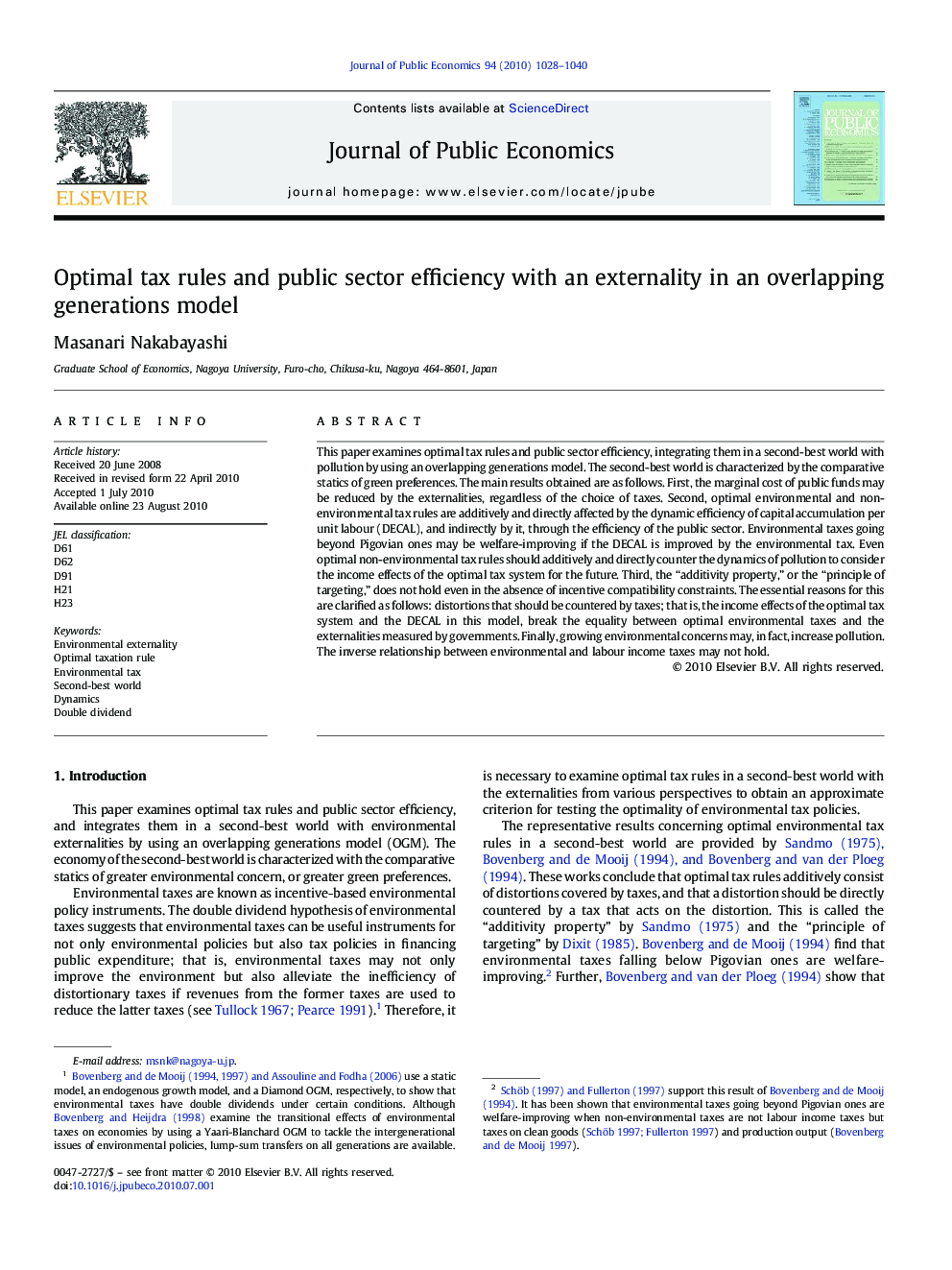| کد مقاله | کد نشریه | سال انتشار | مقاله انگلیسی | نسخه تمام متن |
|---|---|---|---|---|
| 969817 | 1479473 | 2010 | 13 صفحه PDF | دانلود رایگان |

This paper examines optimal tax rules and public sector efficiency, integrating them in a second-best world with pollution by using an overlapping generations model. The second-best world is characterized by the comparative statics of green preferences. The main results obtained are as follows. First, the marginal cost of public funds may be reduced by the externalities, regardless of the choice of taxes. Second, optimal environmental and non-environmental tax rules are additively and directly affected by the dynamic efficiency of capital accumulation per unit labour (DECAL), and indirectly by it, through the efficiency of the public sector. Environmental taxes going beyond Pigovian ones may be welfare-improving if the DECAL is improved by the environmental tax. Even optimal non-environmental tax rules should additively and directly counter the dynamics of pollution to consider the income effects of the optimal tax system for the future. Third, the “additivity property,” or the “principle of targeting,” does not hold even in the absence of incentive compatibility constraints. The essential reasons for this are clarified as follows: distortions that should be countered by taxes; that is, the income effects of the optimal tax system and the DECAL in this model, break the equality between optimal environmental taxes and the externalities measured by governments. Finally, growing environmental concerns may, in fact, increase pollution. The inverse relationship between environmental and labour income taxes may not hold.
Journal: Journal of Public Economics - Volume 94, Issues 11–12, December 2010, Pages 1028–1040